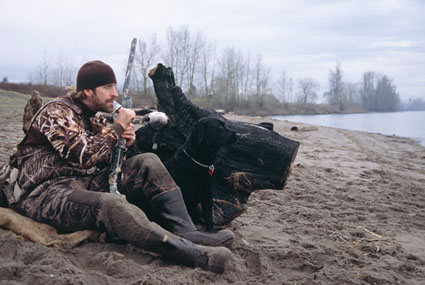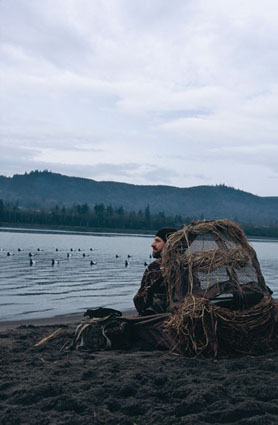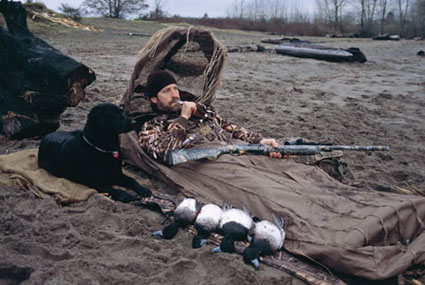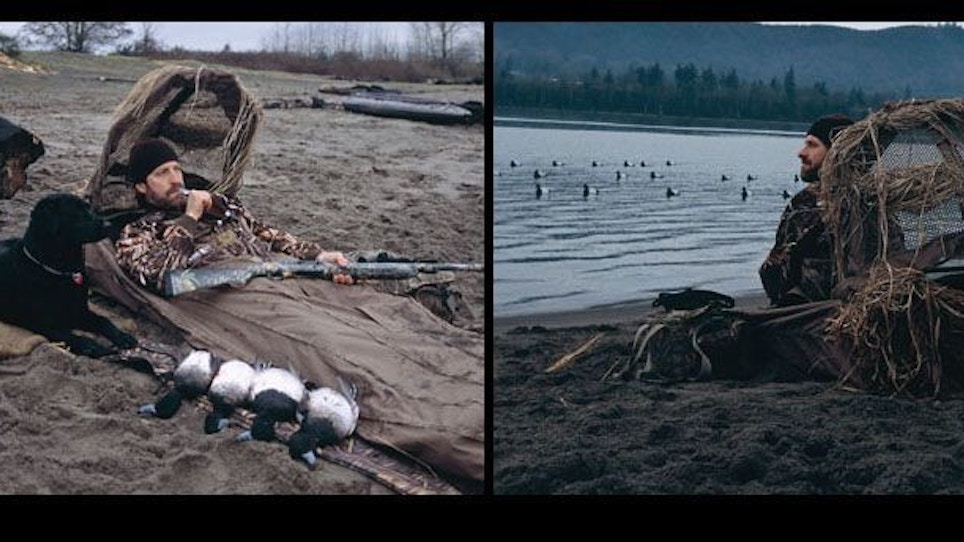 Dry-ground divers — the ultimate oxymoron? True, when most waterfowlers think of hunting divers — scaup, redheads, canvasbacks, goldeneyes and others — they’re also thinking of big water, dozens of decoys and a blind, be it a stick-built hide or a modified boat.
Dry-ground divers — the ultimate oxymoron? True, when most waterfowlers think of hunting divers — scaup, redheads, canvasbacks, goldeneyes and others — they’re also thinking of big water, dozens of decoys and a blind, be it a stick-built hide or a modified boat.
Puddlers, they’ll say, can and quite often are successfully hunted from terra firma; geese, too. But divers? “You gotta get out where the birds are,” they’ll say with a grin that translates into “What a top-water yahoo.” So you can’t kill divers from dry ground? Well, folks, to borrow a line from The Discovery Channel — that myth is busted!
Location, Location, Location
As is the case in the real-estate world, gunning divers successfully from dry ground is all about location. Any blind on any lake or river can be effective given the right situation and under the right conditions. There is one way to increase the odds that you’ll be seated, nice and dry, in a high-traffic area — scouting.
Divers aren’t known for flying over large expanses of dry ground, preferring to raft on and trade over open water. However, most bodies of water will feature some geographic condition — points, or the opposite corners at a bay mouth — that allows the land-based gunner to get closer to the birds without ever leaving dry land. Characteristics to look for are visibility, shallow water and bird traffic.
Diver Blinds On Dry Ground
 When I think dry-land divers, I think mobility. And here, mobility translates into one of two different styles of blinds — natural, and modern layout blinds. Natural blinds in a diver scenario are self-explanatory; however, it’s important to remember that not all natural blinds require willows, spartina grass, cattails and such vertical cover. A small jumble of driftwood, a washed-up root wad, cobblestones — even small wash-outs or bushel basket-sized clumps of spike rushes can serve well as a natural blind.
When I think dry-land divers, I think mobility. And here, mobility translates into one of two different styles of blinds — natural, and modern layout blinds. Natural blinds in a diver scenario are self-explanatory; however, it’s important to remember that not all natural blinds require willows, spartina grass, cattails and such vertical cover. A small jumble of driftwood, a washed-up root wad, cobblestones — even small wash-outs or bushel basket-sized clumps of spike rushes can serve well as a natural blind.
When Avery Outdoors introduced its Power Hunter layout blind in 2002, I immediately put it to use in western Washington as a ground-based diver hide. Lightweight, collapsible and extraordinarily portable, the Power Hunter worked well — and continues to work well — in situations where there was absolutely no natural cover at all, such as is the case at The Beach. Hunting with a partner means I can strap two layout blinds on my back, while he or she packs a couple dozen life-sized bluebills and a small bag of anchors. We’re self-contained and mobile, and can pick up and move in short order if the birds let us know that’s what we need to do.
Setting The Spread
Often, my land-based diver shoots are done on a small scale — walk-in, natural blinds or lightweight layouts, bare essentials gear, and as few decoys as I feel I can get away with. The type of decoys depends on the means by which they find themselves at the water’s edge. A short or non-existent walk, and I’ll throw Greenhead Gear’s (GHG) over-size bluebills (7½ by 15 inches), with perhaps a dozen ’cans or goldeneyes off to the side. If I’m packing blocks in on my back, however, I’ll turn to GHG’s smaller (12 ½-inch) life-sized bluebills, and cut the size of the spread down to a couple dozen, give or take.
The answer to how my rigs are set is actually two-fold. I use long (main) lines consisting of 90 feet of leaded crab cord; anchors, unless it’s rough, are 1 ½-pound grapple weights, available at Cabela’s, upstream and down. A dozen decoys ride the lines, each line equipped with its own dropper and 5-inch stainless-steel gang rig clip. Fashioned from TangleFree cord,  the droppers range from 30 to 40 inches — these lengths allow dogs to swim perpendicular to the lines without getting tangled in the main lines, and the varying lengths help stagger the decoys, making them look more natural. At times, I’ll set only long lines; other times, I’ll set the aforementioned blob of individually-rigged ’bills in front of the blind, with long lines to the right and left.
the droppers range from 30 to 40 inches — these lengths allow dogs to swim perpendicular to the lines without getting tangled in the main lines, and the varying lengths help stagger the decoys, making them look more natural. At times, I’ll set only long lines; other times, I’ll set the aforementioned blob of individually-rigged ’bills in front of the blind, with long lines to the right and left.
More often than not, I’m setting a land-based diver rig on my feet; that is, I’m wading and rigging, just as I would with puddler decoys. There are times, however, where I will use my 10-foot (#53) ATTBAR Aquapod as a miniature tender boat in order to set and retrieve the lines. I’m still hunting from dry ground, only I’m using the ’Pod simply because of water depth and the tides.
Certainly, diving ducks and deep-water scenarios are as traditional as is anything within the waterfowler’s realm; however, there’s just something about gunning black-and-whites, lordly ’cans, and rocketing redheads while lying flat on your back on dry ground. That’s right — dry ground. But don’t worry; it’ll rain, and you’ll be wet enough. After all, this is duck hunting, isn’t it?






